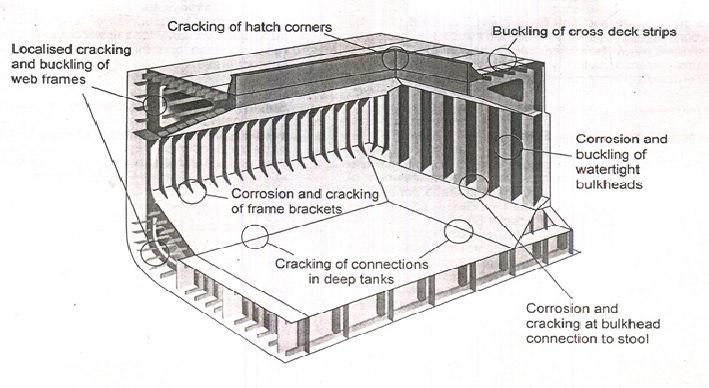Construction Details of bulk carrier are as follow :
- These ships have large clear holds with no ’tween decks. This facilitates fast loading & discharging.
- Hatches are capable of being covered with weather tight covers.
- Engines are usually placed aft.
- Topside tanks (Upper Hoppers) are provided as shown in sketch, to enable water ballast to be carried high up & reduce GM.
- This may be required when carrying heavy cargoes, such as ore in the holds.
- A deep tank is usually not fitted, although one of the middle cargo holds may be usable for taking in ballast (Heavy Ballast Condition).
- In the type shown in the sketch, the sloping side tanks at the bilge form a ‘hopper’(Lower Hopper) which assists in handling of bulk cargo.
- The sloping upper & lower hoppers make the bulk carrier holds self trimming for carriage of cargoes such as grain.
- The height of Hatch coamings on freeboard deck, raised quarter deck, or within one-quarter of the ship’s length from the stem on superstructure decks is to be 600 mm, where they are exposed to the weather. Abaft one-quarter of the length from the stem, the height is to be 450mm.
- Framing except in Large Bulk Carriers is composite type.
- Framing under deck is Longitudinal type.
- The side plating where longitudinal stresses are less, is Transversely framed.
- Framing in Double bottom is longitudinal type.
- The longitudinals are supported by Plate floors not more than 3.7 metres apart.



